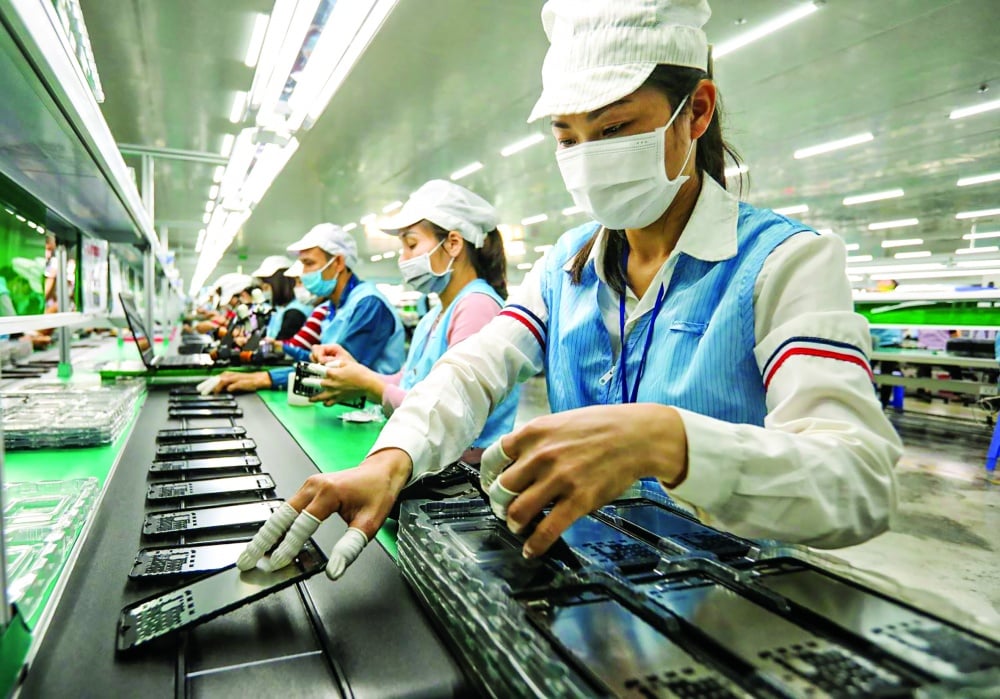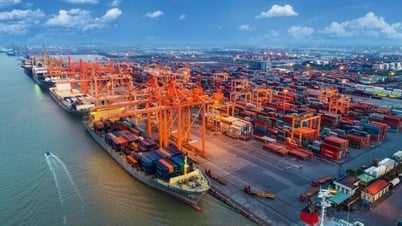The impact of global trade policy
Mr. Luong Duy Phuoc, Acting Director of Market Research at Kafi Securities JSC, commented that global trade policy is shifting strongly as the US uses tariffs as a strategic tool to reshape the supply chain and increase its advantage in bilateral negotiations. Vietnam is choosing a flexible approach, proactively negotiating and showing goodwill with the US to reduce risks and protect its position in the supply chain, especially when foreign direct investment (FDI) is the main growth driver.
The US plans to extend additional tariffs to strategic sectors such as electric vehicles, semiconductors, solar energy, steel, shipbuilding, and pharmaceuticals to bring production back home and curb China’s technological influence. This makes the global economic outlook fragile. Goldman Sachs has lowered its forecast for China’s GDP growth in 2025 to 4%, while Morgan Stanley maintains its forecast at 4.5% but warns of increased risks, reflecting investor concerns about US-China tensions. World trade may enter a “post-globalization” era, shifting from multilateral to bilateral and regional cooperation. Vietnam has been granted a 90-day tax deferral, creating a valuable opportunity to consolidate its position, attract FDI, and take advantage of the restructuring of global supply chains.
Mr. Nguyen Ky Minh, Chief Economist of Guotai Junan Vietnam Securities JSC (IVS), said that in response to the new US tariff policy, countries' reactions are divided into three groups: some countries accept the tax; some countries both accept it and diversify their trading partners; the remaining group is protesting. These developments have caused global aggregate demand to decline, production costs to increase, pushing the US into a scenario of slower growth and higher inflation.
With a high economic openness, the import-export turnover ratio reaching about 165% of GDP by the end of 2024, Vietnam is greatly affected by global trade. If the 46% reciprocal tax is fully applied, Vietnam's GDP growth could decrease by 2-3 percentage points, directly affecting the textile, wood, seafood and electronic components industries. However, the 90-day tax deferral gives Vietnam more time to negotiate a more preferential tax rate, expected to be 10-15%, with a commitment to reduce the trade surplus, reduce negative impacts and strengthen investors' expectations. Export enterprises need to take advantage of this time to increase orders, especially in the second quarter of 2025, to support economic growth. Along with that, the sharp drop in oil prices due to concerns about falling demand helps control inflation, opening up room for monetary policies to stimulate the economy. The 8% growth target by 2025 is completely feasible, although more challenging, thanks to the concerted efforts of the Government , relevant agencies and businesses.
 |
| Electronic component assembly line at Sun Tech Joint Stock Company |
Prospects of economic sectors and stock market
In the short term, export enterprises have not been directly affected by the new tax. However, if the 46% tax rate is maintained from the second half of 2025, the profit margin of the textile, wood, seafood, and electronic components industries may decrease by 5-20%, affecting orders, production costs, and logistics. FDI capital flows also tend to slow down to monitor the negotiation results, putting pressure on industrial park and infrastructure enterprises. Enterprises are restructuring their output markets, shifting to Europe, Japan, Korea, and ASEAN, but this process requires time and adaptive capacity.
Business results depend on each company’s customer structure. If customers increase orders to avoid tariffs or shift orders from high-tax markets to Vietnam (assuming Vietnam negotiates lower tariffs), businesses will benefit. Conversely, if customers avoid the Vietnamese market due to concerns about new tax announcements, businesses will be at a disadvantage. The proportion of the US market in the customer structure is a key factor in determining the level of impact.
The Vietnamese stock market also fluctuated strongly under the impact of US tariffs, with clear differentiation. Export and industrial stocks fell, while defensive and high-localization stocks held their prices better. The 90-day tax deferral created a "psychological buffer", helping investors focus on Q1 business results, the shareholder meeting season and the implementation of the KRX system in May 2025. KRX is a turning point, improving the quality of transactions with products such as T+0, short selling, odd-lot trading and is a premise for upgrading to an emerging market, although it is difficult to achieve in 2025. This event promotes medium- and long-term foreign capital flows, creating positive sentiment in Q2/2025.
Domestic sectors such as banking (MBB, ACB ), infrastructure and construction materials (HPG) are assessed to have good resilience, benefiting from public investment, personal consumption and bad debt handling. The steel industry is forecast to grow by 8-10%, public investment by 10-12%, and banking by 10-15% in 2025. Sectors less dependent on the US market such as technology (FPT), food, beverage, and pharmaceuticals also maintain positive prospects. Enterprises with stable value chains and domestic expansion capabilities are safe destinations for investment cash flows.
Source: https://thoibaonganhang.vn/giua-thuong-chien-co-phieu-nganh-nao-van-tich-cuc-163514.html


![[Photo] Top players gather at the 2025 Nhan Dan Newspaper National Table Tennis Championship](https://vphoto.vietnam.vn/thumb/1200x675/vietnam/resource/IMAGE/2025/5/23/9ad5f6f4faf146b08335e5c446edb107)




![[Photo] Anh Hoang - Dinh Duc successfully defended the men's doubles championship of the National Table Tennis Championship of Nhan Dan Newspaper](https://vphoto.vietnam.vn/thumb/1200x675/vietnam/resource/IMAGE/2025/5/23/d6ab3bcac02c49928b38c729d795cac6)




















































































Comment (0)